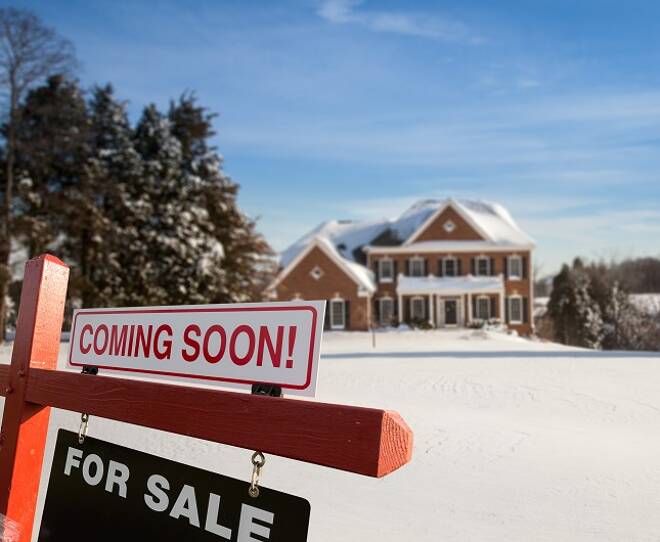Advertisement
Advertisement
U.S Mortgage Rates Rise Again but Remain at sub-3% Supporting Home Buyers
By:
U.S mortgage rates rose for a 2nd consecutive week, according to figures from Freddie Mac. The rise was not enough to spook homebuyers, however.
Mortgage rates were on the rise for a 2nd consecutive week to mark the 2nd rise in 4 weeks.
30-year fixed rates increased by 3 basis points to 2.99% in the week ending 20th August.
Compared to this time last year, 30-year fixed rates were down by 56 basis points.
30-year fixed rates were also down by 195 basis points since November 2018’s most recent peak of 4.94%.
Economic Data from the Week
Economic data was on the lighter side through the 1st half of the week.
Key stats included August’s NY Empire State and the Philly FED Manufacturing Index numbers for August and the weekly jobless claims.
The stats were on the negative side, with manufacturing sector activity seeing slower growth and initial jobless claims rising back up to 1m.
A lack of progress on the U.S COVID-19 stimulus package was also negative for yields. There was also rising tension between the U.S and China to consider.
On the monetary policy front, the FED delivered a gloomy economic outlook mid-week, which failed to weigh on mortgage rates.
Freddie Mac Rates
The weekly average rates for new mortgages as of 20th August were quoted by Freddie Mac to be:
- 30-year fixed rates increased by 3 basis points to 2.99% in the week. Rates were down from 3.56% from a year ago. The average fee remained unchanged at 0.8 points.
- 15-year fixed rates rose by 8 basis points to 2.54% in the week. Year-on-year, rates were down from 3.03%. The average fee fell from 0.8 points to 0.7 points.
- 5-year fixed rates increased from 2.90% to 2.91% in the week. Rates were down by 41 points from last year’s 3.32%. The average fee fell from 0.4 points to 0.3 points.
According to Freddie Mac,
- Homebuyer demand continues to accelerate, ultimately delivering support to an otherwise stagnated economy.
- The surge in sales led to a rapid increase in demand for remodeling and home furnishings as consumers look to renovate while adjusting to home life during COVID-19.
Mortgage Bankers’ Association Rates
For the week ending 14th August, rates were quoted to be:
- Average interest rates for 30-year fixed, backed by the FHA, declined from 3.23% to 3.16%. Points decreased from 0.33 to 0.27 (incl. origination fee) for 80% LTV loans.
- Average interest rates for 30-year fixed with conforming loan balances increased from 3.06% to 3.13%. Points fell rose 0.33 to 0.36 (incl. origination fee) for 80% LTV loans.
- Average 30-year rates for jumbo loan balances increased from 3.40% to 3.41. Points increased from 0.31 to 0.35 (incl. origination fee) for 80% LTV loans.
Weekly figures released by the Mortgage Bankers Association showed that the Market Composite Index, which is a measure of mortgage loan application volume, decreased by 3.3% in the week ending 14th August. In the week prior, the index had increased by 6.8%.
The Refinance Index fell by 5% and was up by 38% from the same week a year ago. In the week prior, the Index had increased by 9%.
The refinance share of mortgage activity fell from 65.7% to 64.6% in the week ending 15th August. In the week prior, the share had increased from 63.9% to 65.7%.
According to the MBA,
- Positive economic data, including retail sales, and large U.S Treasury action drove mortgage rates higher.
- The increase in rates weighed on refinance activity, while purchase applications continued their strong run.
- For the U.S economic recovery, the housing sector remains a bright spot.
Recent housing start and home buyer permit figures suggest that house supply could be increasing to better meet strong demand.
For the week ahead
It’s a relatively busy 1st half of the week on the U.S economic calendar.
Key stats include U.S consumer confidence figures for August and durable goods and core durable goods orders for July.
Away from the economic calendar, expect chatter from Capitol Hill and Beijing to also influence U.S Treasury yields.
About the Author
Bob Masonauthor
With over 28 years of experience in the financial industry, Bob has worked with various global rating agencies and multinational banks. Currently he is covering currencies, commodities, alternative asset classes and global equities, focusing mostly on European and Asian markets.
Advertisement
